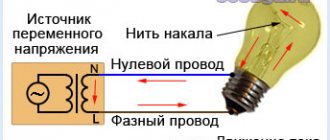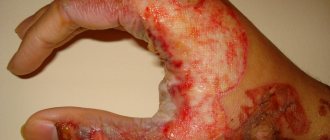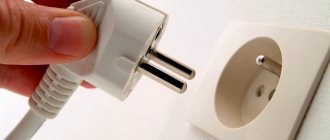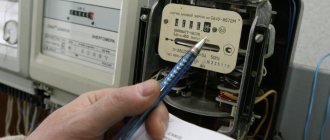One type of injury is electric shock. Unfortunately, despite the fact that everyone knows about the dangers of devices and wires, this still occurs quite often. The most common electrical injuries occur at work. This applies to those activities in which people work with various technical devices and wiring. In addition, you can get an electric shock at home. In most cases this concerns children. Therefore, everyone should know what to do if they get an electric shock? After all, the faster help is provided, the lower the risk of complications.
Causes of electrical injuries
Electric shock is one of the most dangerous types of injuries. If the device has high voltage and prolonged contact with the source, it can be fatal. Injury can occur due to various reasons. The most common of these is contact with a bare wire. This can happen to anyone, especially people who work with electricity. A bare wire is a particularly dangerous source of current. Most often, electricians come into contact with it when repairing meters, sockets, etc. In addition, you can get electrical injury from ordinary appliances that are used every day: hair dryer, kettle, mobile phone charger, microwave oven. Normally, all household appliances are not dangerous, since the wires have a protective layer. If it breaks, its integrity is compromised. This may result in exposed wires. Therefore, broken appliances must be removed and kept away from children! After all, despite the small dose of electricity, they can be dangerous to the child’s health. Another source of current is sockets.
You can get an electrical injury not only indoors, but also outdoors. Lightning is a natural source of current. When exposed to the human body, it can lead not only to burns, but also cause death.
How to protect yourself from electric shock
- Under no circumstances should a wire lying on the ground be lifted or removed from the road. Also, do not touch wires on the street sticking out of the ground, avoid transformer wires hanging from poles;
- Avoid contact with wires that hang too low to the ground;
- Do not come close to trees, equipment, or a house where a broken wire has fallen.
- Count 8 meters (the size of a bus) from the point where the wire touches the ground and go out of the “kill zone” in a goose step. Because when walking in small steps, both legs are practically at the same point with the same electrical potential, so no voltage will arise between them. Do not lose your balance so that when you stagger, you do not accidentally touch conductive objects.
- What to do if you find an injured person next to a broken wire? First, turn off the power transmission of the high-voltage line, and only then call for help, and do not approach the victim. Only if you are 100% sure that the low voltage wire (up to 1 kV) can you try to help it using special means of protection against electricity.
- Do not plug in devices with wet hands.
How to protect yourself when using electrical appliances:
- Follow safety rules when handling electrical devices.
- If it is necessary to work with electrical appliances, use protective equipment.
Means of protection against electric shock:
- Insulating pads and supports;
- Special dielectric gloves, caps, galoshes and mats;
- Portable grounding;
- Tools with insulated handles;
- Special protective clothing;
- Protective partitions, screens, chambers protecting against current;
- Warning signs and posters.
A child was electrocuted: symptoms
Unfortunately, despite parental control, children are still exposed to electrical injuries. Most often this happens when kids try to insert their fingers or iron objects into an outlet. It is not always possible to see exactly how a child injured himself. Therefore, it is necessary to know the symptoms that will bother the baby after contact with current. First of all, these are painful sensations. Regardless of the strength and duration of contact with the exposed device, the child will get scared and start screaming. If the baby has been electrocuted in the arm, it is necessary to examine the surface of the skin. If there is local damage, "electrical signs" will be observed. They are gray or yellow spots with clear boundaries. There is pain when touching them. General electrical trauma is manifested by convulsive muscle contractions, in severe cases accompanied by loss of consciousness.
Current conductors
Let's take copper as an example. Copper is a very good conductor. Therefore, it is used to make electrical wires.
Each copper atom contains 29 electrons in the electron cloud surrounding the nucleus. But not all electrons firmly hold onto their home. The peculiarity of copper (and other metals) is that its electrons easily leave their native atom and, like nomads, begin to wander from atom to atom. This is the distinctive feature of a conductor - mobile electrons. So the next time you look at the bottom of a copper pan, imagine how many electrons are roaming around there.
What to do if you get an electric shock: first aid
If there are signs of electrical injury, the person must be given immediate assistance. First, remove the source of tension from the body. Avoiding contact with electricity is the main measure. What to do if an electric shock strikes and a person loses consciousness? In this case, you shouldn't panic. First you need to call an ambulance. After this, it is necessary to assess the condition of the victim. To do this, the status of vital signs is checked: pulse, blood pressure and respiration. If there is no heartbeat, resuscitation measures must be carried out immediately. These include:
- Providing oxygen flow. You need to open the window, free your neck from tight clothing, and clean your mouth (if necessary).
- Tilt the victim's head back and push the lower jaw forward.
- Perform a closed heart massage: press the xiphoid process with clenched palms 30 times.
- Cover your nose with one hand and blow air into the victim’s mouth 2 times.
These activities must be repeated until spontaneous breathing and heartbeat appear.
What not to do?
There are several tips that can harm human health, so it is prohibited:
- touch the surface with both hands;
- turn on the faulty machine until the fault is eliminated;
- disassemble and try to repair the machine yourself;
- ground the housing through a water pipe or battery;
- disconnect the noise filter, since voltage on the housing may arise from it, since this way it gets rid of the leakage current. But turning it off will cause the control board to burn out. So it's a matter of grounding.
The drum of a washing machine is usually made of stainless metal without a protective coating. Therefore, you can often feel an unpleasant tingling sensation when putting in or removing laundry. To protect yourself from negative external influences, it is recommended to unplug electrical equipment after washing.
So, if you feel an electrical charge on the body of the washing machine, you must immediately turn off the equipment and use the services of a specialist. Only a highly qualified electrician is able to conduct a full check, determine the leakage current and find a solution to the problem. Any independent interventions are prohibited as they may have a detrimental effect on human health.
Treatment of affected skin areas
After the basic measures have been carried out, the burn areas should be treated. Electric shock always leaves 2 marks on the body. They need to be found and washed with running water for several minutes. “Current marks” should not be treated with an antiseptic solution, as this may increase the depth of the lesion. After washing, the skin should be wrapped with a cloth soaked in cold water.
Main symptoms
Emergency care for electrical injury
Having seen a person unconscious, before calling a doctor and providing first aid, the cause of such a painful condition should be determined.
An electric shock can be easily recognized by the presence of burns at the points where the current enters and/or exits. The skin will be swollen and discolored, ranging from pink to red. In especially severe cases, blackening of the skin at the sites of electric shock is possible.
Convulsive movements indicate involuntary contractions that necessarily occur when a person comes under mains voltage. Weak or irregular pulse and breathing may also be impaired.
If a person is conscious, he may complain of pain throughout the body, a feeling of numbness in the limbs. There may also be confusion and slurred speech due to shock.
Electric current causes thermal, chemical and mechanical damage. Damage to the peripheral nervous system is determined by the passage of current, thermal effects, and burn intoxication.
Symptoms of electric shock:
- Unexpected fall of a person on the street;
- Unnatural throwing away from a current source by an invisible force;
- Loss of consciousness;
- Convulsions;
- Severe neurological signs: memory loss, impaired understanding of speech and vision, impaired spatial orientation, psychomotor restlessness; weakness and weakness; dizziness and headache; violation of thermoregulation; flickering in the eyes, blurred vision.
- Changes in skin sensitivity;
- Ventricular fibrillation and respiratory arrest;
- Burns on the body with sharply defined boundaries.
Providing specialized assistance in case of electric shock
When all the measures have been completed, the question arises: what to do if you get an electric shock and first aid does not bring results? Regardless of how the victim feels, after removing the source of electricity, you need to call an ambulance. This is especially true in cases where a person has lost consciousness. In case of severe injuries, the victim is hospitalized. The hospital provides detoxification and symptomatic therapy. For convulsive syndrome, the drug “Diazepam” is administered.
Electric shock in medical language is called “electrical trauma”. It is characterized by the effect of electric current on the human body at the highest possible value and duration.
Unfortunately, some such injuries are fatal, especially if the stress was too great, or a fragile organism, for example a child, was hit.
The body of the equipment is electrocuted
Touching the body of the unit can also lead to pain due to the action of electric current. Firstly, a damaged contact or abrasions and cracks in the wire insulation can be a factor in the leakage of electricity. Excessive vibration caused by a rotating drum often leads to damage to the integrity of the insulating coating. During the washing and spinning process, the wires rub against each other, resulting in the destruction of their outer sheath.
First, turn off the power to the equipment and open the case by removing or folding the top cover. Then conduct a thorough inspection of the wires inside, located in close proximity to the body surface. As a rule, frayed wires can be seen with the naked eye.
The next most common factor is using a washing machine in a room with a high level of air humidity. The optimal solution is to dismantle the device and install it in a dry room. If this is not possible, the device will need to be properly grounded. This will protect you from “breakdowns” during operation.
The last reason is a breakdown of the heating element or electric motor. If the problem is in the heating tube, purchase a similar element in the store and insert it to replace the old one. If the motor fails, you can try to repair it alone; if that fails, replace it with an analogue one.
Why is fast response so important?
First aid in case of electric shock should be provided instantly, and each of you needs to know how it is done. This was taught in life safety lessons at school, but many of us hardly remember all the regulations for actions in such cases. Nevertheless, it is extremely important and useful to know about this, since none of us is immune from such influences.
The consequences of an electric shock are not always fatal, but they, one way or another, leave a serious imprint on the health of the human body.
Electrical injuries usually occur due to carelessness or curiosity.
- For example, teenagers can climb into a transformer booth without really thinking about the consequences.
- Very often, small children become victims of electricity; while exploring the world around them, they can simply touch a regular household outlet, grab a plug, or, worse, stick their fingers into its connectors.
Therefore, young parents should closely monitor the actions of their baby and, if possible, protect him from such consequences. What to do in case of a short-term electric shock and after it?
How to teach your child safety basics
Teaching children how to handle appliances and electrical systems carefully is one of the main ways to prevent electrical injuries. It is necessary for a son or daughter to begin acquaintance with danger from early childhood, starting with understandable prohibitions, gradually expanding their understanding of the essence of the restrictions.
Children's thinking is different from that of an adult, so it is necessary to approach the issue of teaching a child in a playful way. Among the most suitable options you can use:
- game. Invite your child to play with toys or dolls, and in the process show what happens if a naughty car or animal plays with an outlet or electrical appliance. Be sure to show your own fear and the seriousness of the situation;
- cartoons. Children easily learn the lessons taught by cartoon characters. Suggest watching “Auntie Owl’s Caution Lessons”, “Fixie Tips. Caution, electricity”, “Why”;
- books. You can purchase a specially designed book on teaching children the basics of safety by age;
- discussion. After reading a book or watching a cartoon, discuss what you saw and heard;
- developing a clear understanding of the word “no”. You should carefully monitor the frequency of use of this word. Adults need to remember that a child reacts to a ban only 5 times a day, after which the word “no” is not perceived. For the ban to work, you need to use it only in truly dangerous situations.
If a child attends a preschool institution, then safety lessons will be taught as part of the general educational process. But in order for what you learned in kindergarten to be remembered well, it is necessary to support your knowledge with home schooling.
By securing your own home and teaching your child to follow safety rules, parents can avoid most situations where there is a risk of electrical injury. But in addition to the general rules, it is worth telling your child and reminding yourself how to behave during a thunderstorm so that the natural phenomenon does not threaten life.
Tell your child how to behave in a thunderstorm
How and why do electric shocks occur?
A person can suffer from an electric shock under fundamentally different circumstances. And for this it is not at all necessary to poke your finger into the socket. It is enough to walk along the ground where the short-circuit cable is laid. This can also happen when certain surfaces in the home are overvolted, or when trying to insert a plug into a bad, old outlet. If you have a child, you should carefully monitor his games and instruct him on the subject (if he is of a conscious age) how dangerous some curiosity can be.
- Electric shock comes in different forms. It may be insignificant, or it may turn out to be truly fatal and fatal. It all depends on the duration of exposure to electricity on the body and the voltage threshold that was present in the network at the time of the injury. Most often, people are exposed to electric shocks of 220 volts, since this is the indicator that is present in our household electrical wiring.
- The most minor consequence of a 220-volt electric shock is the appearance of grayish and yellowish spots on the skin. At the same time, the person feels relatively normal and does not show any complaints about his own condition. This usually happens if the impact is short-lived.
- An important phenomenon in the pathogenesis of electrical injury is the path of electric current through the human body. All tissues of the human body vary significantly in the amount of resistance to its movement, and their conductivity is highest in those places where the tissues are filled with moisture. The most resistant to such influences are bones and skin. And soft tissues - muscles, organs, blood - are good conductors, and, therefore, are the most vulnerable in this regard.
- Nerve trunks and endings are also fairly good conductors. But, most interestingly, skin can also be turned into an excellent conductor of electric current. And to do this, just moisturize it. Then a lesion that is insignificant under normal conditions can turn into a real fatal shock for a person.
- The characteristics of the voltage itself should also be taken into account. For example, alternating current is much more dangerous than direct current. This is due not to its qualitative characteristics themselves, but to its ability to provoke muscle spasms, due to which a person in trouble simply cannot free himself from the “deadly” contact.
- Cramps are often accompanied by increased sweating, which naturally moisturizes the skin, making it an excellent conductor for tension, which spreads throughout the body quite quickly. When the current begins to penetrate the body with even greater intensity through the skin, it provokes damage to the respiratory tract and heart. Ultimately, the patient develops a fatal arrhythmia and dies.
- Death rarely occurs from low voltage electric shock. It is caused rather by the direct effect of a relatively weak current on the myocardium. In this case, ventricular fibrillation develops. If we talk about high voltage (1000 volts or more), it provokes sudden death due to the direct effect on the centers of the brain responsible for the activity of the heart and respiratory organs.
- The saddest and most terrible outcome of an electric shock is instant death. However, it is no better when the victim remains conscious and cannot break contact with the source of voltage. Loss of consciousness with serious damage to the vital functions of the human body is also possible.
The effects of electric currents on the body
- Thermal - due to the resistance of body tissues, electrical energy turns into thermal energy, causing electrical burns at characteristic points of entry and exit of current, which are called current signs. As thermal energy passes through tissue, it changes and destroys it.
- Electrochemical - leads to thickening and gluing of blood cells, the movement of ions and a change in the charge of protein molecules, the formation of vapors and gases. The affected tissues take on a cellular appearance.
- Biological - the functioning of the skeletal muscles of the heart, nervous and other systems is disrupted.
What to do if you witness a tragedy?
If a person is electrocuted before your eyes, you must provide him with first aid as carefully and competently as possible. Knowing the essence of electric shock and its consequences, you can even save a person’s life, which, undoubtedly, is a great personal achievement in the life of every conscious member of society.
What to do in this case?
- If a person is electrocuted from contact with an electrical installation, it must be immediately disconnected from the network in order to free the victim from the effects of voltage;
- If a person touches a live wire, this wire should be cut off with an ax with a wooden handle, a knot, or any other object whose material is not conductive;
- If a person is injured in a household voltage accident, most likely nothing serious will happen, but you should still pull him away from the electrical source by grabbing his dry clothing. She is not a conductor. Under no circumstances should you take the victim by the arm, leg or any other open part of the body, since in this case the current may strike the rescuer himself.
So, you have interrupted the victim’s contact with the voltage source, which means you have eliminated the potential danger of death.
But what to do next, and how to bring the victim to his senses? How to prevent tragic further consequences?
What should you do after an electric shock?
- Place the victim comfortably in the fresh air, loosen his clothes and unfasten his collar so that it does not interfere with oxygen saturation of the lungs;
- By massaging, warm his body;
- If the person does not regain consciousness, give him a sniff of ammonia. Observe the reaction and make sure that, having regained consciousness, the person does not faint again;
- Even without secondary loss of consciousness and a quick return to normal, it is important to organize hospitalization for the victim. To do this, call an ambulance and succinctly describe what happened before your eyes;
- If the person does not regain consciousness after all the manipulations you have performed, perform artificial respiration with alternating cardiac massage. These actions must be performed until it becomes clear that your attempts are powerless.
- If you witness such an incident, but are unable to help personally, try to at least call emergency services or rescue services.
Electric shock during pregnancy deserves special attention. This, alas, also happens, and of course, the expectant mother is worried about the question - what to do, and how this can affect the child? Here, too, everything depends on the voltage and duration of exposure. However, if the woman is okay, the baby is probably not harmed either.
In any case, it is very important to see a doctor as quickly as possible - only he can make a specific verdict and give you valuable instructions. Go to the hospital immediately, even if the injury was very minor!
How to behave in a thunderstorm
Rules of conduct if a thunderstorm finds you at home:
- disconnect all electrical appliances from the network, except the refrigerator;
- check that windows and balcony doors are closed;
- do not go near windows;
- do not use a mobile phone unless absolutely necessary;
- If possible, delay leaving the house until the storm is over.
Rules of conduct if a thunderstorm catches you on the road:
- when traveling by car, it is advisable to park away from trees and power lines;
- turn off the engine, close the windows, turn off the radio and remove the antenna;
- when driving a two-wheeled vehicle, you must stop and move 40 meters away from it;
- when in open areas, in the city, you can continue to move slowly to the nearest shelter.
Rules of conduct if there is a body of water nearby:
- get out of the water and move away from it;
- When boating or catamaran, return to the shore as quickly as possible and move away from the water.
Rules of conduct during a thunderstorm in the open:
- the best solution is to get to the nearest building and wait there;
- if there are no buildings nearby, you must: turn off all electrical devices located nearby: computer, phone, tablet, player, navigator, etc.;
- remove jewelry and put it in a backpack or bag;
- check if there are bushes, trees, or power lines nearby;
- find a depression or ravine. It is desirable that the soil in it be dry and sandy;
- squat down and lower your head between your knees, clasping it with your hands;
- try not to move;
- do not lie down on the ground;
- do not hide under lonely trees, metal structures, or damp walls.
Rules of behavior during a thunderstorm in the forest:
- get out of the forest or find an open area;
- turn off all electrical appliances nearby;
- remove jewelry;
- avoid tall trees;
- avoid trees previously damaged by thunderstorms;
- squat down, lower your head and clasp your hands.
Teach these rules to your children and remind them about safety precautions at home to completely eliminate the possibility of electrical injury.
If you liked the article, please share a link to it
Malfunction of individual components
In the case where the cause of slight tingling is a malfunction of individual components (the first and second of the previously discussed cases), the only correct solution would be to seek help from specialists. Indeed, in order to prevent further destruction of the electrical wiring of the washing unit, it will be necessary to organize a thorough check of its entire electrical part for integrity, which can only be carried out by specialists and only in factory (laboratory) conditions. Based on the results of this check, the demolished wiring elements must be replaced with new ones.
Exactly the same actions should be taken in the event of damage to its heating element or electric motor. Such a situation requires urgent replacement or major repairs with the replacement of all worn-out components of the working circuit. Thus, in this case, your participation is limited to organizing the repair of faulty components of the washing machine by specialists.
Symptoms of malfunctions and solutions
Failure can be determined based on the location and conditions of exposure to electric current on the user:
- shocks through the water (not only when supplying water to the washing machine, but also when opening the tap) - indicates problems with insulation and leakage of electricity through the water.
- in contact with the body - indicates the interaction of the outer casing with a source of electricity;
- when removing laundry from the drum, it “speaks” of a violation of the integrity of the insulation of the electric motor through which the drum rotates;
- when walking (especially on a concrete surface) near a washing machine - indicates an electricity leak through the housing or other electrical element to the floor;
Important! Before repairing the breakdown, it is necessary to de-energize the equipment.
The fault table below shows typical faults and tells you what to do to fix them.
| Signs | Typical faults | How to fix |
| The washing machine produces electric shocks when not in use | The socket is faulty | Remove the wires from the socket, replace or repair the faulty element |
| The integrity of the power cord or wiring insulation is broken | “Ring” the wire and insulation, replace or repair “broken” wiring | |
| The “Power” key or control system shorts, voltage appears on the case | Unscrew and remove the front panel, repair the button or the system as a whole. Repairing an element that has become unusable is impractical; it will be cheaper to install a new control system | |
| Line filter failure | Dismantle and repair or replace the failed part | |
| Current flows from the power supply circuit to the body of the washing machine (due to constant presence in a room with changes in humidity levels) | Change location or buy equipment with a higher level of moisture resistance | |
| Poor water heating or its complete absence, the washing machine body is pierced with electric current during washing | Broken water heating element (heating element) | Dismantle the damaged heating element and install a new one |
| The washing machine emits an electric discharge during operation, the washing machine may not turn on | Breakdown of the electric motor or insulation of the washing machine | Often, a burnt-out engine cannot be repaired, so it must be replaced. |
| The floor surface produces an electric shock near the washing machine | The washing machine cord is damaged and there may be a water leak. | Identify the location of damage to the outer casing or wire and repair the damage. |











